Postscript: future prospects of glaciersThe study of glaciers is important for many reasons, not least because of the impact they will have on all our lives in the future. Most importantly, glaciers are responding to global warming and, as time goes by, their contribution to rising sea levels will become increasingly important and potentially catastrophic. More locally, many areas of the world rely on glacial meltwater for power generation, water supply and irrigation. Some of the world's major cities are vulnerable to the loss of glaciers. Images in this section illustrate how humans are likely to be affected by the demise of glaciers. |
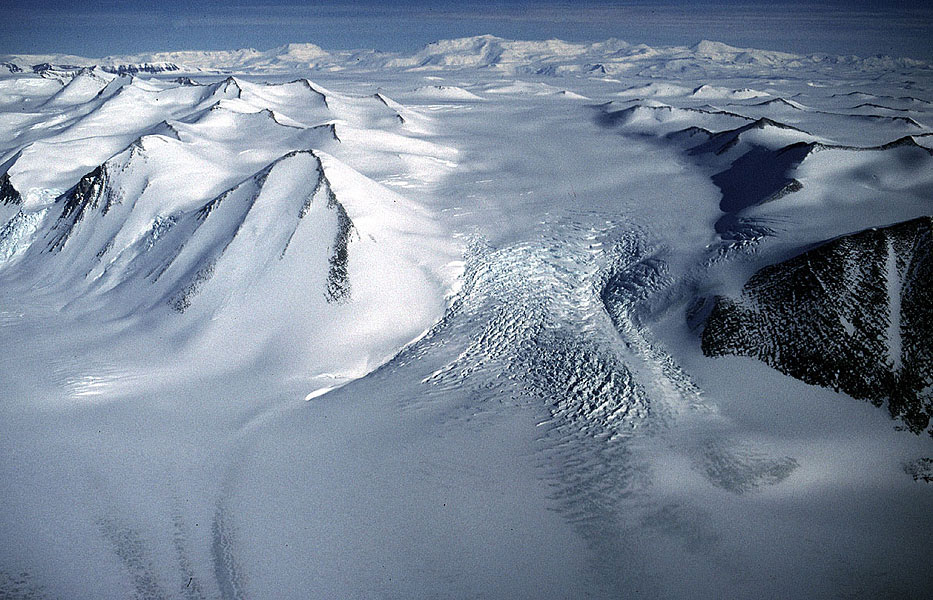 The vulnerability of the world's biggest mass of ice, the East Antarctic ice sheet, to climatic warming, is less than for the peripheral regions. Indeed, warming may be heralded first by an increase in snowfall and a positive mass balance. MH | 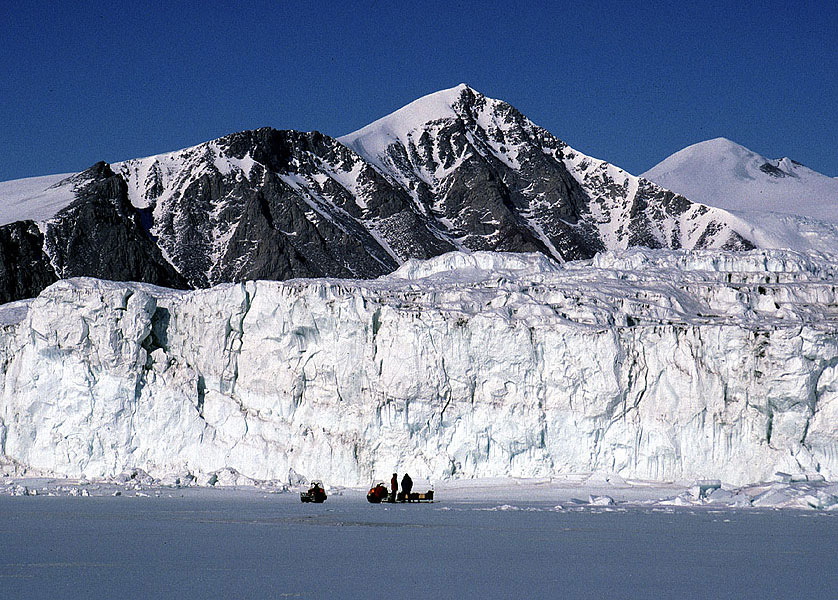 The terminus of Mackay Glacier, an outlet glacier from the East Antarctic Ice Sheet in the western Ross Sea, dwarfs a field party that is crossing the sea ice in front of it. The glacier has been slowly receding since its discovery in the early 20th century. MH | 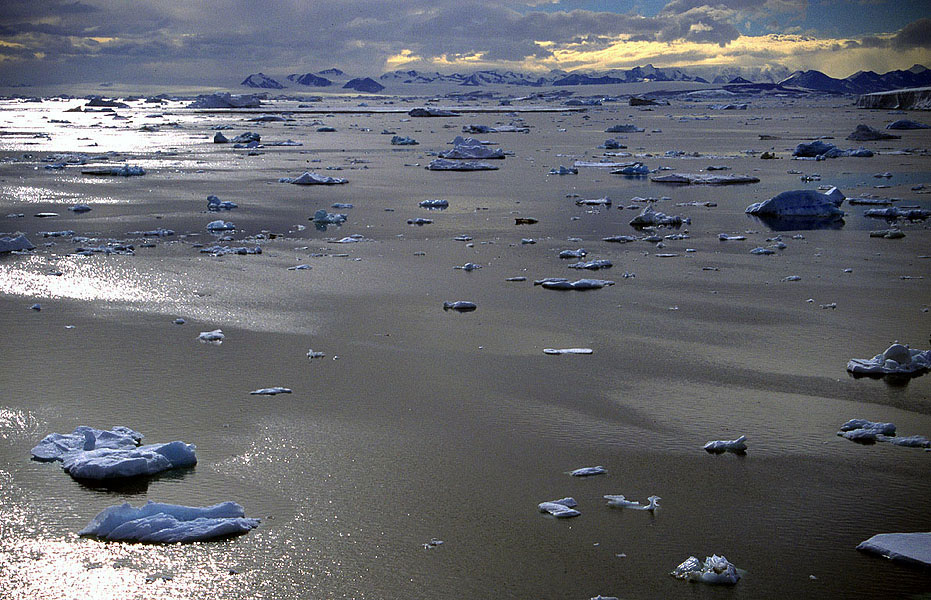 The signs of global warming are present in most parts of the world. In the northern Antarctic Peninsula we see not only the local glaciers thinning and disappearing rapidly, but also the collapse of ice shelves, producing numerous icebergs. Yet, elsewhere on the continent, the ice sheet appears to be growing. MH | 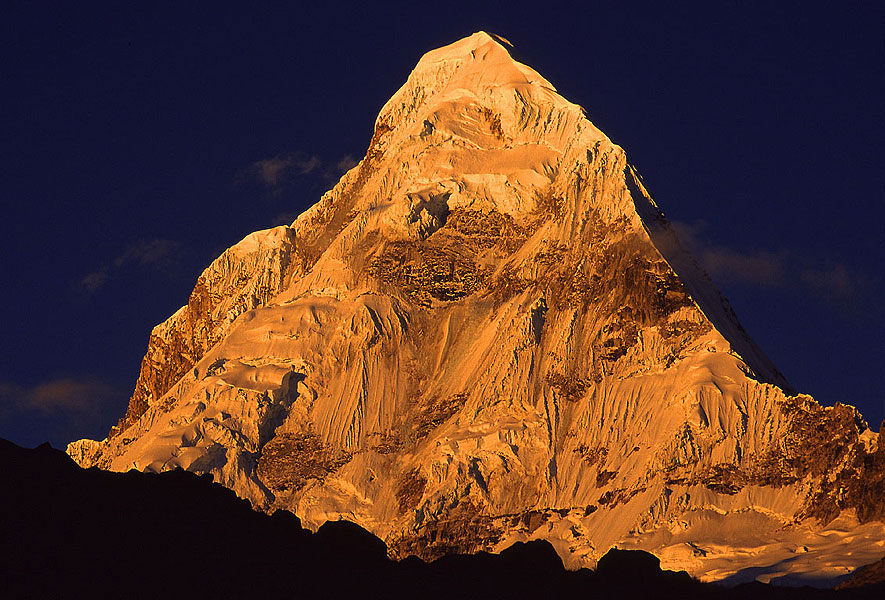 The pyramidal form of Nevado Santa Cruz (6247 m), Cordillera Blanca, Peru at sunset. Although many ice masses in the tropical Andes are rapidly receding and it is predicted by some scientists that most will disappear in 10-15 years, the hanging glaciers on this peak are still looking healthy. MH |
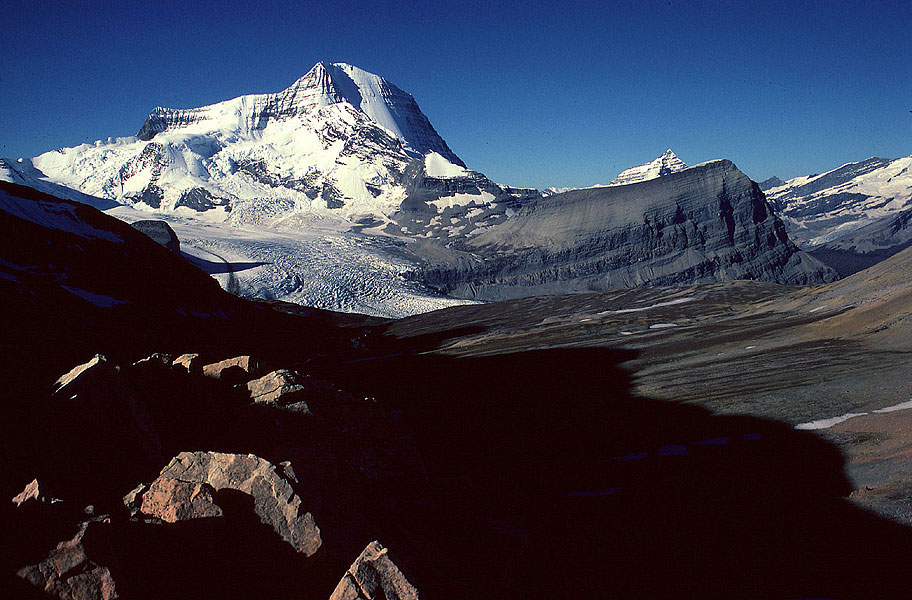 Glaciers are receding rapidly in the Rocky Mountains and many small ones have disappeared in the least 100 years. Larger glaciers, however, have many decades of life in them , when fed by snows of the highest peaks, such as Mount Robson, British Columbia, Canada. JA | 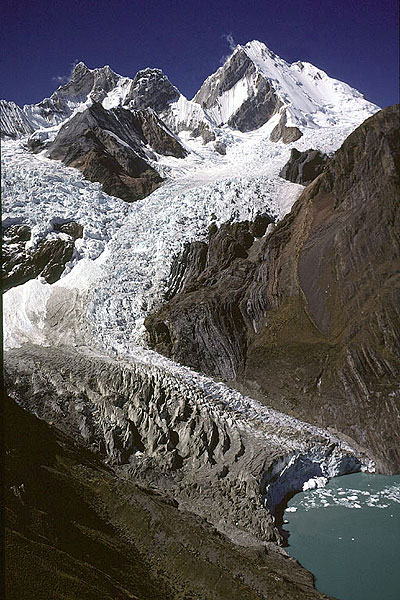 Spectacular glacial retreat is causing the loss of scenic beauty spots in tropical areas. This beautiful valley glacier in the Cordillera Huayhuash, seen here in 1980 has receded so much that the tongue no longer reaches the water. No more tropical icebergs are calved into this moraine dammed lake. JA | 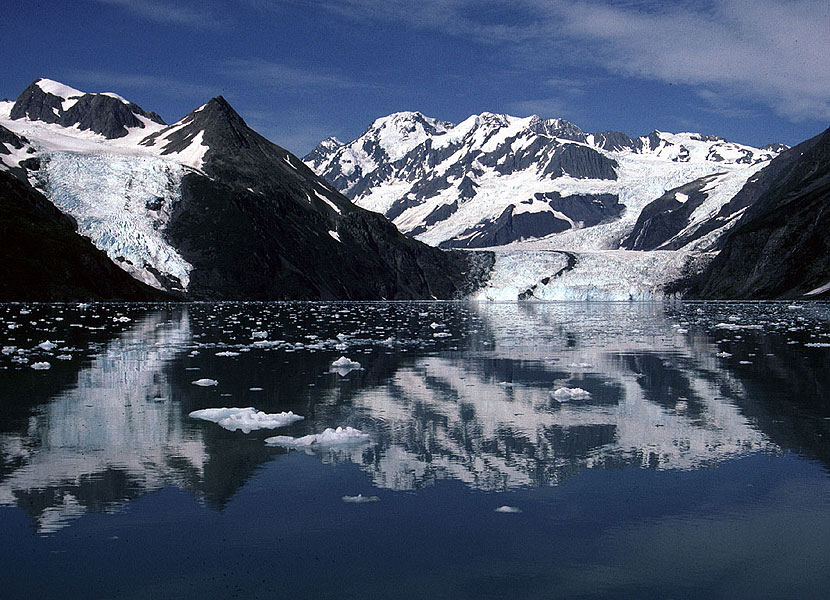 Most tidewater glaciers in the fjords of southern Alaska have been receding rapidly over the past century. However, like Surprise Glacier in Harriman Fiord, a branch of College Fiord, they still flow vigorously, discharging large volumes of icebergs into the fjord. MH | 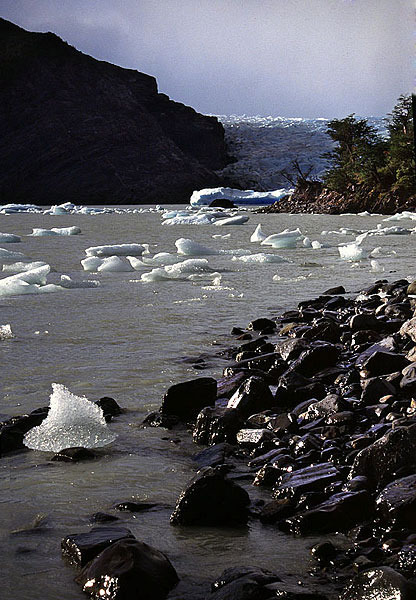 The Southern Patagonian Icefield in Chile feeds numerous outlet glaciers. Some of those flowing east, like Glaciar Grey, terminate in deep lakes that were carved out by ice during the last ice age. The snout of this and similar glaciers terminates in the beautiful forests of southern beech (Nothofagus). MH |
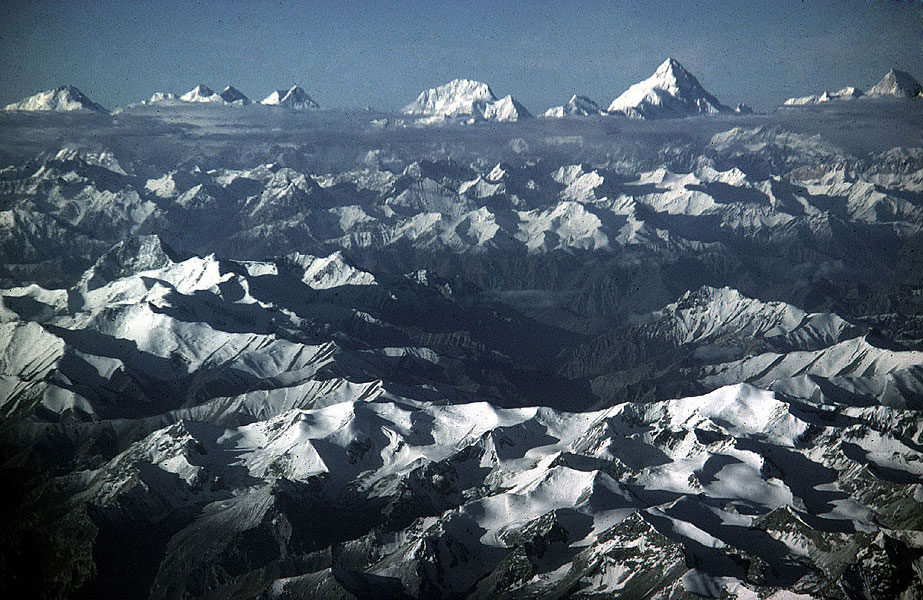 The scale of these glacierised peaks in the Karakorum Mountains is evident from a flight from London to Beijing. The pyramidal peak is K2 (8611 m), the world's second highest peak, and is a typical 'horn'. Debris-covered glaciers, fed by ice and rock avalanches, descend into the dark valleys below. MH | 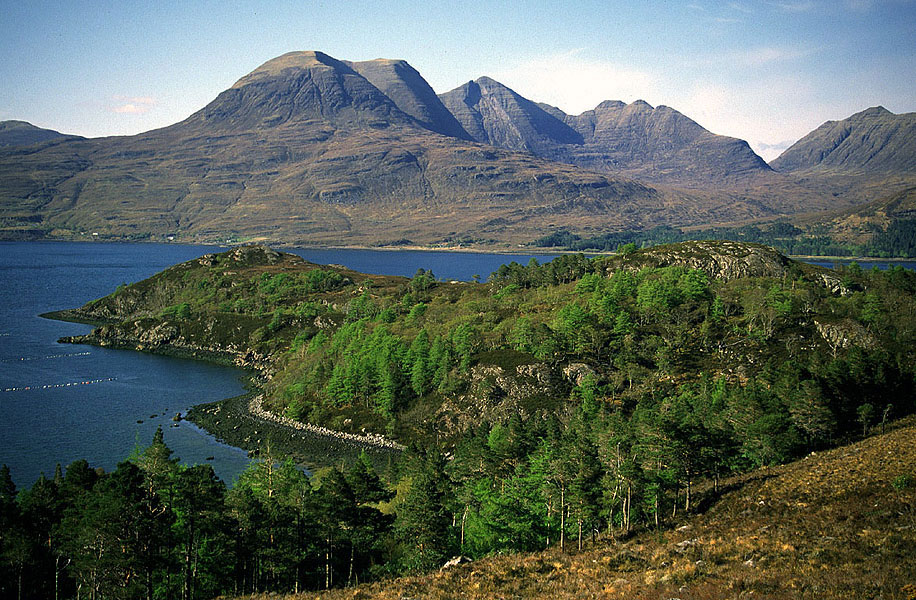 If ice ages were to continue their cyclical pattern, then areas like Loch Torridon in the Northwest Highland of Scotland, which bear a strong glacial imprint, will once again be inundated by glacier ice in several thousand years time. It remains to be seen if human-induced climatic warming will ultimately pre-empt such a development. MH | 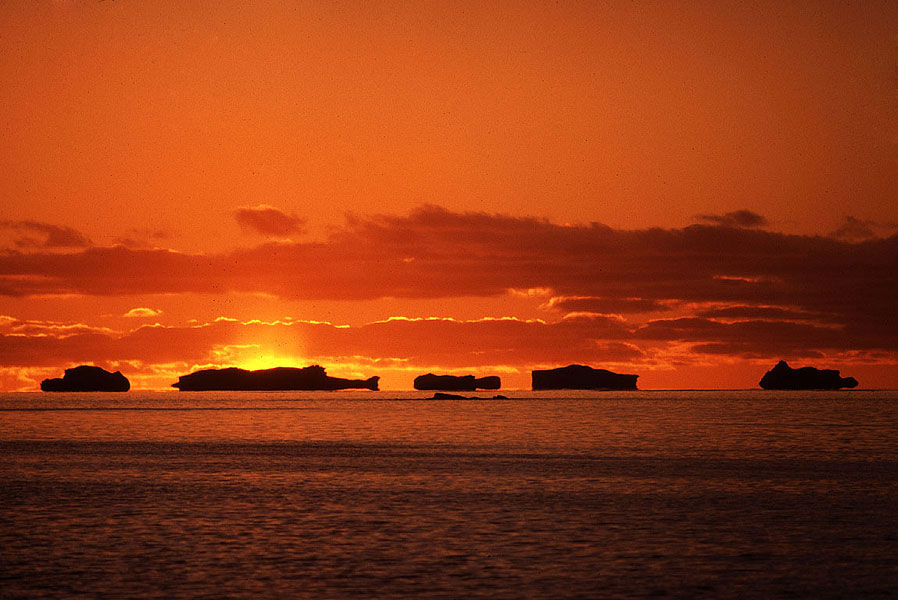 Grounded icebergs form a mirage off the coast near Davis Station in East Antarctica at sunset. If the major ice sheets were to collapse catastrophically, as some scientists have predicted, sights like this will become commonplace. MH | |
| Photos: Michael Hambrey (MH), Jürg Alean (JA) |